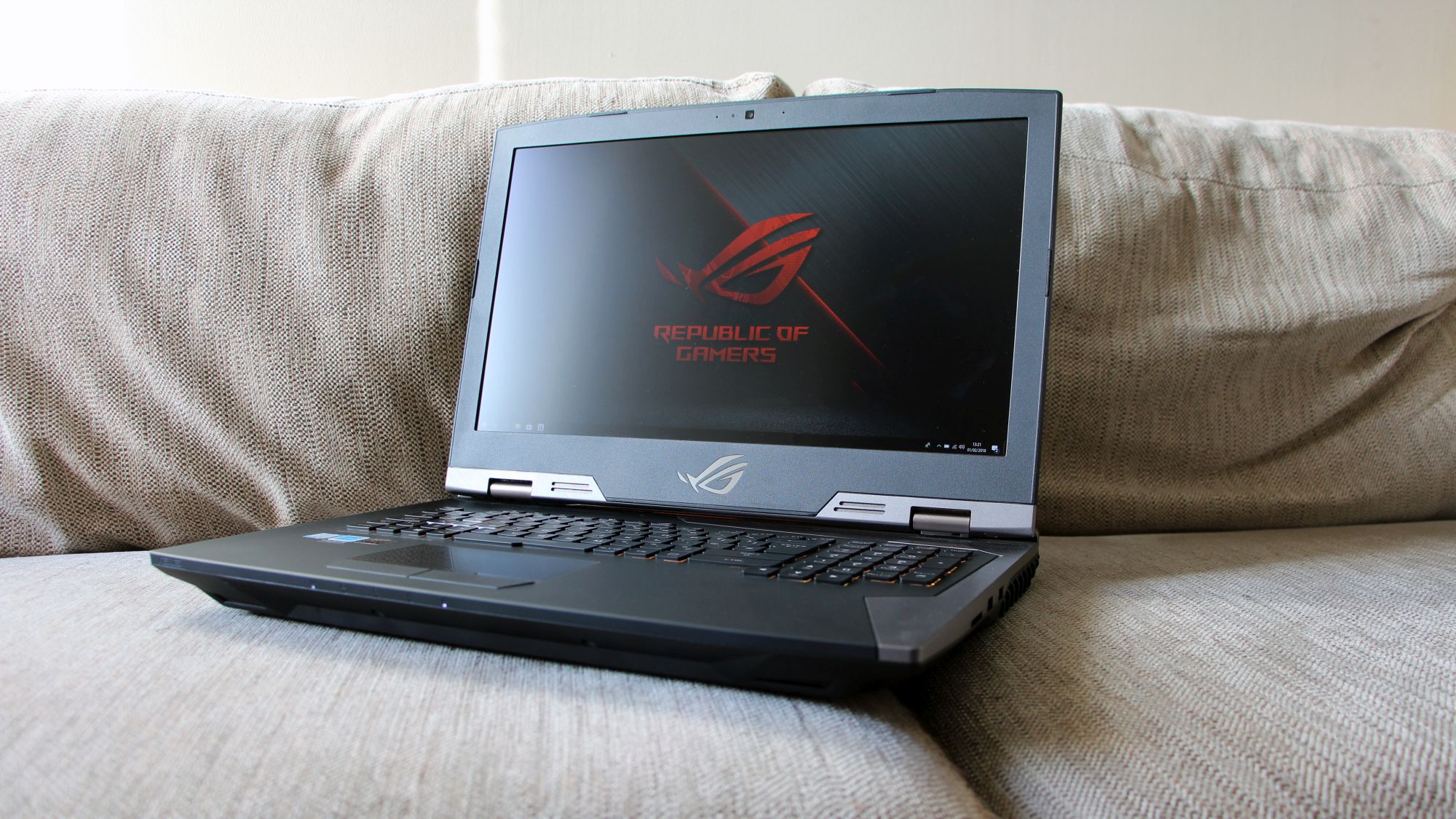TechRadar Verdict
There aren’t many gaming notebooks that can beat the G703 for speed or quality, but this laptop is hugely expensive – and just huge, too.
Pros
- +
Superb performance throughout
- +
Rock-solid design
- +
Good keyboard and screen
Cons
- -
Heavy and thick design
- -
Poor battery life
- -
Hugely expensive
Why you can trust TechRadar
There aren’t many laptops as large as the Asus ROG G703. This monster machine is designed to swat away the latest games, and it’s not concerned about being slim or light – instead, it’s one of the bulkiest notebooks we’ve ever seen.
It’s one of the most expensive, too. It costs more than most of its rivals – but can it possibly be worth the money? In a nutshell, this has one of the most rock-solid performances of Asus laptops for gaming. However, it isn't perfect.
Here is the Asus ROG G703 configuration sent to TechRadar for review:
CPU: 2.9GHz Intel Core i7-7820HK (quad-core, 8MB cache, overclocked to 4.3GHz)
Graphics: Nvidia GeForce GTX 1080 8GB
RAM: 32GB DDR4
Screen: 17.3-inches, 1,920 x 1,080 non-touch IPS
Storage: 512GB Samsung SM961 SSD, 1TB hard disk
Optical drive: No
Ports: 4 x USB 3.1, 1 x USB 3.1 Type-C, 2 x audio jack, Mini DisplayPort, HDMI, Thunderbolt, SD card reader
Connectivity: Killer Dual-Band Wireless, Killer Gigabit Ethernet, Bluetooth 4.1
Camera: 720p Webcam
Weight: 10.6 pounds (4.8kg)
Size: 1.96 x 16.7 x 12.5 inches, 50 x 425 x 319mm (H x W x D)
Price and Availability
The ROG G703 isn’t available in any alternative configurations, and it can be difficult to track down – but we’ve asked Asus, and they’ve assured us that it’s not End-of-Life. So, no matter your location, you’ll be able to find this machine. The prices are a little different in the UK and the US: in Britain you’ll have to pay £3,100, while in the US the healthy exchange rate means it costs $3,245.
There’s no disputing that the G703’s specification is powerful, but its key rival is the Alienware 17 R4, and that machine has far more options.
The model we reviewed had the same core components as the Asus ROG G703. However, it’s possible to spend about half as much and get a weaker CPU and GPU, or configure the memory and storage options.

Design
The G703 is a great-looking laptop. The bulk of this machine is hewn from a mixture of machined, gunmetal aluminium and matte black plastic. The keyboard has RGB LEDs, and the ROG logo on the lid is similarly illuminated. And, if that wasn’t enough, the back is finished with shining, burnt orange metal.
It’s certainly the match of the Alienware. The Asus has more two-tone metal, but the Alienware has extra RGB LEDs.
Sign up for breaking news, reviews, opinion, top tech deals, and more.
The Asus pairs its loud looks with formidable size. It’s 50mm thick – so it’s even thicker than the 42mm Alienware. It tips the scales at 4.8kg, so it’s heavier than the Dell-made machine too.
The G703 is huge, but that means exceptional build quality. There isn’t any give in the surface, so we’re confident in lugging it to LAN parties – although you’ll definitely need a good backpack.

The size doesn’t just mean great build quality – it also means top-notch connectivity. There are four USB 3.1 connectors and a Type-C jack, and mini-DisplayPort, HDMI and Thunderbolt. There’s a card reader, Killer-branded networking on the inside, and even an Xbox wireless receiver.
It’s possible to get inside, too. A couple of base panels are easy to remove and give access to pairs of free memory and M.2 SSD slots. That’s more upgrade ability than most laptops.
Asus has bolstered its top-notch build quality with solid ergonomics. The chiclet have 2.5mm of travel, which is a tad more than the Alienware, and the buttons are fast, responsive and consistent.

This chiclet device still can’t match a proper mechanical keyboard, but it’s certainly one of the best units on a gaming laptop – and the rock-solid base means it’s possible to hammer away during FPS and MOBA games without concern.
The trackpad is good, too. Its buttons are fast and light – as close as we’ve seen a notebook come to replicating a proper USB rodent.
Mike has worked as a technology journalist for more than a decade and has written for most of the UK’s big technology titles alongside numerous global outlets. He loves PCs, laptops and any new hardware, and covers everything from the latest business trends to high-end gaming gear.
